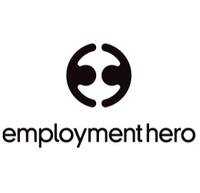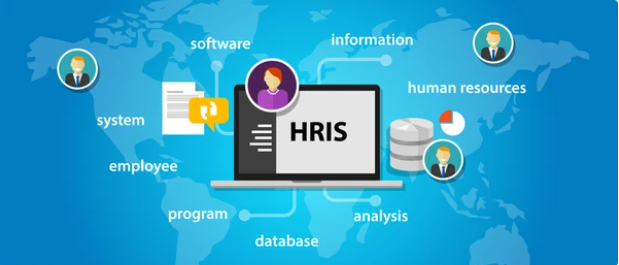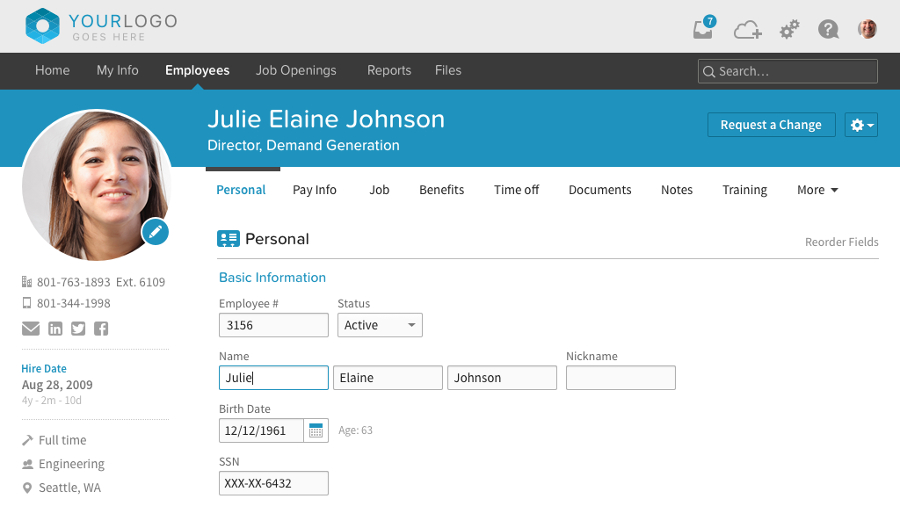How to choose the perfect HR software package for your business
Every business needs an efficient HR system and we have curated the perfect guide on how to choose one

Human resources (HR) is a critical aspect of every organization. Most HR functions are performed with software tools, and choosing the right tools for the job is crucial.
HR managers must consider specific factors to help them choose the best tools to perform their jobs. Paying attention to these factors helps your business avoid substantial problems that can cause serious consequences, e.g., poor employee optimization and payroll errors. This article will describe the primary considerations and steps for choosing the perfect HR software package for your business.
Before we start, let’s examine what HR software is and its types.

TechRadar created this content as part of a paid partnership with Employment Hero. The contents of this article are entirely independent and solely reflect the editorial opinion of TechRadar.
What is HR software?
HR software is the collection of digital tools that human resources professionals employ to manage and automate tasks. The tools can be cloud-based (hosted on external servers) or on-premise (hosted on a company’s internal servers). They help with many tasks, including
HR software helps companies automate many management tasks, reduce costs, and make HR teams more productive.
Types of HR
HR software is divided into three main categories:
HRIS tools deal with data collection and organization. They enable HR teams to store and manage data required to perform their tasks, such as:
Are you a pro? Subscribe to our newsletter
Sign up to the TechRadar Pro newsletter to get all the top news, opinion, features and guidance your business needs to succeed!

Human capital management (HCM) tools deal with managing employees in an organization. They help optimize an employee’s journey from hiring till they leave the company. Major HCM functions include:
HRMS tools are the most complex because they combine the functions of HRIS and HCM. For instance, an HRMS tool can automate an organization's recruiting process, handle onboarding for the recruited employees, and help manage employees for as long as they stay with the organization.
HRMS tools simplify many HR tasks, reducing manual work and increasing your company’s efficiency.
Choosing the right HR software
These are the essential steps to follow in choosing the right HR software for your organization:
Take the time to understand why you’re choosing a new HR software. You need a clear picture of your needs to make the best choice. Critical questions to ask include:
2. Prioritize stability
Usability is crucial for every software tool. You need a tool with an intuitive interface that’s easy to understand and navigate. Most people on an HR team are non-technical and will likely struggle with overtly complicated interfaces. Hence, look for HR software with a minimal, uncluttered interface with features neatly arranged across the dashboard.
HR personnel already have a lot of challenging tasks, and an unintuitive tool will make their life worse. Never ignore usability when choosing an HR tool. Fortunately, you can ask for a free trial to test a platform’s responsiveness and ease of use before making a final decision.
3. Look At Integration Capabilities
No HR tool will provide all the features you want. That’s why third-party integration exists. A tool may not have a specific feature but can link up with a platform having that feature. For example, your payroll platform may lack expense management features. Hence, you can connect it to an expense management platform to automatically track corporate expenses and reimburse employees when needed.
Different tools have different levels of third-party integration. The most popular HR tools have extensive third-party integration libraries because developers are familiar with them. If you’re after integration capabilities, consider popular HR tools like Workday, BambooHR, Rippling, etc.
4. Customer Support
Customer support is another critical consideration when choosing HR software. Sometimes things can go wrong, and you might need external help to solve the issues. Hence, look for an HR software vendor that provides reliable customer support. You should be able to speak with a professional support agent by email, live chat, or telephone. The staff should be responsive and knowledgeable enough to solve your issues quickly.
5. Mobile Application
Nowadays, any HR tool without a mobile application is doing itself a disservice. Smartphones account for nearly 60% of internet traffic, and many users expect an HR tool to have a native mobile app they can use on the go.
Mobile apps are more convenient to use than platforms users can only access from a web browser or desktop app. Smartphones are portable, so anyone can open the app anywhere and do what they want, unlike PCs, which are uncomfortable to use in many situations, e.g., during a commute.
The good news is that most HR software vendors now offer a mobile app, so you shouldn’t have a problem with this criterion.

6. Cost
Of course, you can’t ignore costs when choosing a software tool. Every organization budgets specific amounts for IT-related tools; your HR tool must fit the allocated budget.
Different HR tools have different pricing strategies. Some charge a fixed monthly or annual fee for each registered user, while others require negotiating bulk deals with a sales team. If your organization is small (less than 50 employees), choosing a tool with a fixed monthly or annual fee is ideal. If you run a large organization with hundreds of employees, you can leverage its size to negotiate bulk discounts with HR software providers. Vendors are willing to provide significant discounts to snag a big user base.
Check the refund policies of every HR tool. An ideal tool should provide a window to get a full refund if unsatisfied with the tool. Also, check if the vendor offers a free trial, allowing you to test their features before making a final payment.
7. Scalability
Companies don’t stay the same size forever. Your organization could have 50 employees today and over a thousand in the next five years. Hence, consider long-term scalability when choosing an HR software package. The platform should be able to handle increasing usage without sacrificing performance.
Unfortunately, some tools work very well for a certain number of users but struggle when usage surpasses a specific limit. Ensure you read customer reviews to avoid choosing such tools.
Cloud-based HR tools are easier to scale because the operator takes care of adding new server space and tweaking the features to support increasing usage. On-premise tools are harder to scale because your organization must monitor its in-house servers and add new ones when needed, which requires additional manpower. Despite this difficulty, some organizations prefer on-premise tools because of security and customization.
8. Security
HR systems store sensitive information that can severely damage your company if it falls into the wrong hands. Hence, security is critical when choosing an HR software package.
Any HR tool you choose should have advanced security features preventing unauthorized data access. Such features include:
2FA demands two modes of identification before granting access to a user’s account. The first mode is the correct username and password, and the second is a one-time PIN sent to an associated phone number or email address or generated by an authenticator app.
2FA prevents malicious actors from accessing legitimate accounts even if they somehow get the correct password. They might have the right credentials but can’t get into legit accounts without the correct one-time PIN.
Different HR platforms employ different protocols to secure user data. For instance, some platforms use the Advanced Encryption Standard 256 (AES-256) algorithm, which uses 256-bit keys to encrypt user information, making it impenetrable to malicious actors. Other platforms use protocols with key lengths of up to 4096 bits.
Any worthwhile HR platform will clearly state its security features to prospective users.
Access Control involves an organization’s administrator controlling which users can access specific data. For example, in an HR platform, you should be able to grant HR staff access to sensitive information like pay and performance reviews, while other staff can’t access this data.
Access Control also involves logging which user accesses sensitive data. This way, you can easily trace any leaks or hacks and take the required action.
You should be able to set a timeout schedule wherein every user automatically gets logged out and must log in again to continue using the HR platform. This feature helps prevent legitimate users from being exploited by malicious actors.
You should be able to create regular backups of your Human Resource Information System (HRIS) database to avoid losing sensitive data in case of file corruption or theft. A good platform should let you create automatic backup policies and back up files at the set schedule without human intervention.
9. Create A Shortlist
Above, we’ve outlined the main factors to consider when choosing an HR software package. They are the major things to consider when selecting a suitable HR tool for your business.
At this point, it’s advisable to create a shortlist of the HR vendors meeting the above criteria for your business. You can shortlist between 1 to 10 platforms as your final choices. Afterward, it’s time to perform in-depth research on each one to ensure you pick something viable in the long term. Research methods include:
10. Test drives and trials
After researching and choosing the products you want to go with, it’s necessary to conduct trials. Most HR software vendors offer free trials and demos to let prospective customers test a platform’s features before making a final decision.
Test an HR platform based on the criteria mentioned in this article: usability, security, customer support, scalability, etc. Get as many employees as possible to test the platform and provide feedback. Extensive trials will help you avoid picking an unsuitable long-term solution.
11. Implementation
If a product looks suitable after extensive trials, you can move to the implementation stage. This part involves your organization’s IT team helping set up the entire system for employees. You also can request help from the software vendor.
At this stage, ensure you communicate with employees about the benefits of the new system they’ll be using. Take advantage of the vendor's onboarding or training services to familiarize new users with the software. Point employees to all the helpful resources they can get as they adopt the new HR system.
Final words
We’ve outlined the primary considerations and steps to follow to pick the best HR software package for your business. Follow our tips, and you’ll likely choose a tool you’ll enjoy using in the long term. For more information, see our list of the best HR management software of 2023.
Stefan has always been a lover of tech. He graduated with an MSc in geological engineering but soon discovered he had a knack for writing instead. So he decided to combine his newfound and life-long passions to become a technology writer. As a freelance content writer, Stefan can break down complex technological topics, making them easily digestible for the lay audience.
